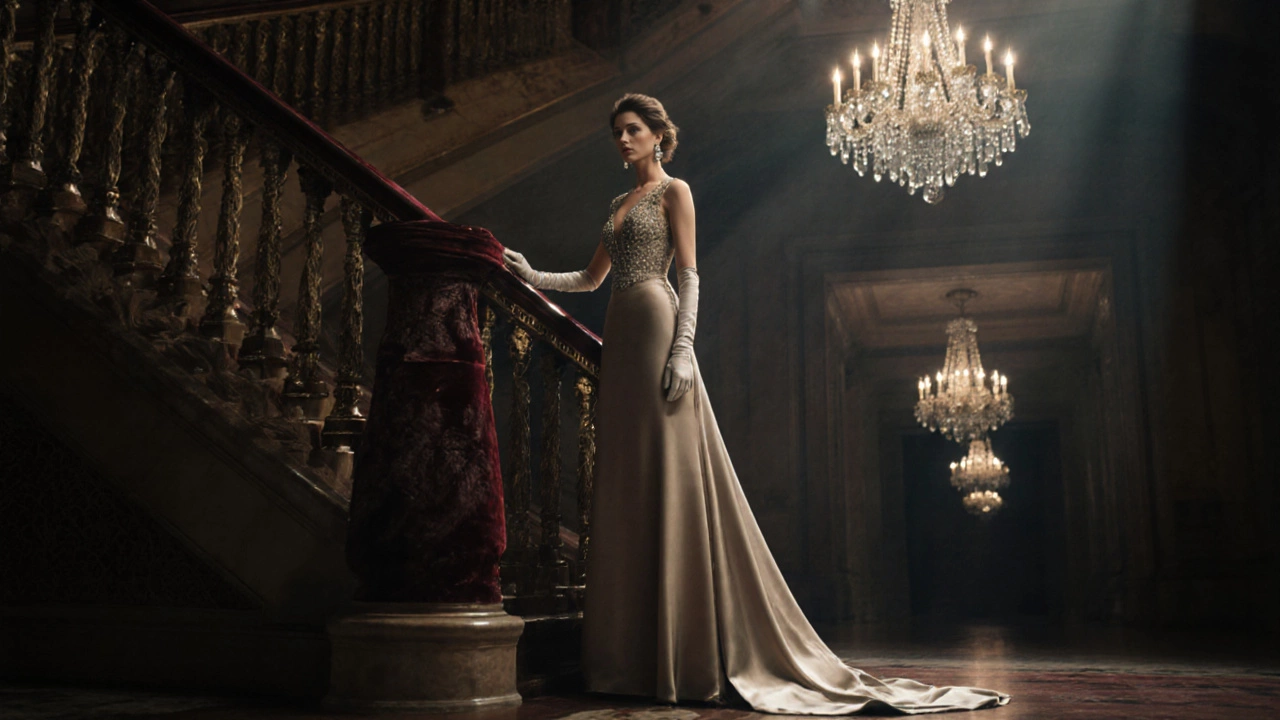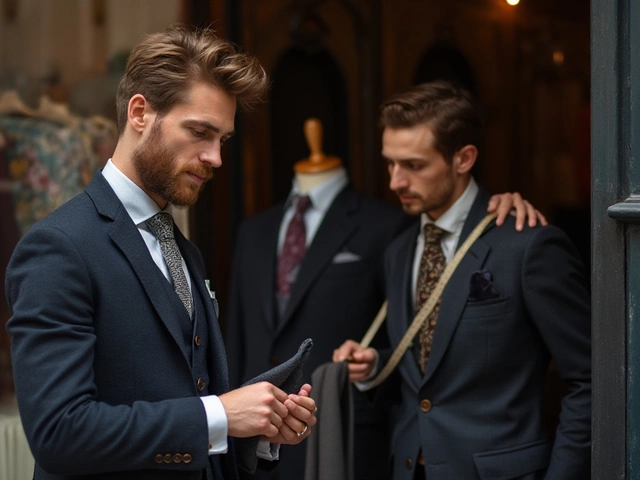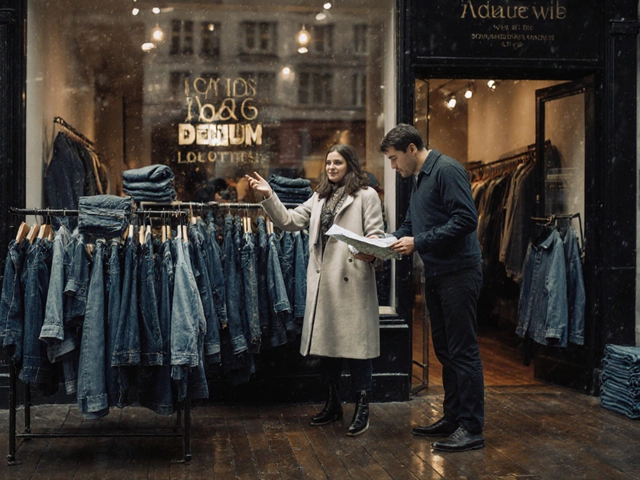Evening vs. Cocktail Dress Selector
Event Details
How It Works
This tool uses guidelines from the article to help you select the appropriate formal dress type based on:
- Event time and venue
- Formality level indicated by invitation
- Dress length and fabric requirements
- Cultural expectations for formal events
Ever stood in front of your closet the night before a wedding, gala, or fancy dinner, wondering if that little black dress is enough-or too much? You’re not alone. The line between an evening dress and a cocktail dress gets blurry fast, especially when event invites say "semi-formal" or "black tie optional." But the difference isn’t just about length or sparkle-it’s about context, culture, and when you’re expected to show up.
Evening Dresses Are for the Biggest Nights
An evening dress is what you wear when the event is truly formal. Think: opera openings, white-tie galas, charity balls, or royal weddings. These aren’t just fancy parties-they’re high-society occasions where tradition still matters. Evening dresses are long, often floor-length, and made from rich fabrics like silk, satin, velvet, or chiffon. They’re designed to make a statement without shouting. Think structured bodices, dramatic trains, or intricate beading that catches the light as you move.There’s rarely a rule about sleeves, but modesty is implied. Strapless, off-shoulder, or one-shoulder styles are common, but bare arms or deep plunges are usually reserved for more modern interpretations. The key? It’s meant to be worn with gloves, heels, and statement jewelry. You don’t just wear an evening dress-you complete an outfit.
In North America, evening dresses are often worn after 6 p.m. and almost always at events that end after midnight. If your invitation says "black tie," you’re expected in an evening dress. No exceptions.
Cocktail Dresses Are the Versatile Middle Ground
A cocktail dress is the Swiss Army knife of formal wear. It’s for events that are dressy but not ultra-formal: holiday parties, anniversary dinners, art gallery openings, or work-related networking events. The magic of a cocktail dress is its flexibility. It hits anywhere between just above the knee to mid-calf-never floor-length. Most are shorter than 36 inches, and many are designed to be worn with heels that peek out when you walk.Materials vary more than evening dresses. You’ll see lace, sequins, knit, crepe, and even structured tulle. Colors are bolder, patterns are allowed, and details like ruffles, cut-outs, or asymmetrical hems are common. A cocktail dress doesn’t need to be expensive to look polished. A well-fitted black dress from a fast-fashion brand can be just as appropriate as a designer piece.
The biggest clue? Time of day and setting. Cocktail dresses are worn in the early evening-say, between 6 p.m. and 10 p.m.-and at events where people are mingling, not sitting through a three-hour performance. They’re made for movement, conversation, and dancing, not for sitting still under chandeliers.
Length Is the First Clue-But Not the Only One
If you’re trying to tell them apart at a glance, length is the easiest marker. Evening dresses: floor-length. Cocktail dresses: knee-length or slightly above or below.But length alone won’t save you. I’ve seen women show up to a black-tie event in a glittery knee-length dress thinking it was "cocktail appropriate." It wasn’t. And I’ve seen evening gowns at a 7 p.m. birthday party that looked like they belonged on a runway, not a dining table.
The real difference is in the details:
- Evening dresses often have trains, capes, or layered skirts that create volume and drama.
- Cocktail dresses are streamlined-no trains, no excess fabric that drags on the floor.
- Evening dresses use heavier fabrics that hold shape and drape elegantly.
- Cocktail dresses use lighter, more playful materials that move with you.
- Evening dresses rarely have bold prints or bright colors-neutrals, metallics, and deep jewel tones dominate.
- Cocktail dresses embrace color, texture, and pattern. A floral, polka dot, or geometric print is totally fine.
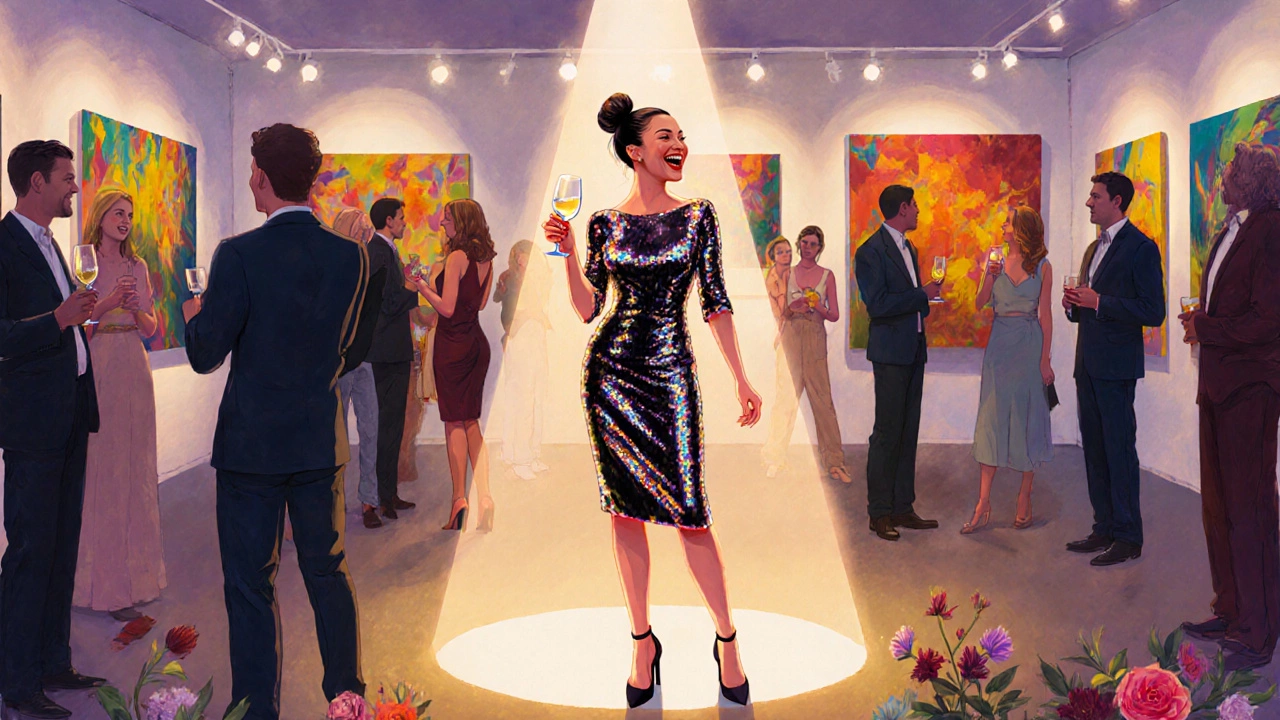
When to Wear What? Real-World Examples
Let’s make this practical. Here’s how to pick the right one for real events:- Wedding (6 p.m., church ceremony, reception at a hotel): If it’s black tie, go evening. If it’s formal but not black tie, cocktail is fine.
- Opera or ballet performance (8 p.m. start): Evening dress. Even if you’re not in the box seats, the crowd expects it.
- Company holiday party (7 p.m., downtown restaurant): Cocktail dress. You’re there to network, not to be the center of attention.
- Charity gala (9 p.m., ballroom with live orchestra): Evening dress. This is the kind of event where people spend months picking their outfit.
- Art gallery opening (6:30 p.m., wine and cheese, standing room only): Cocktail dress. You’ll be walking, talking, and holding a glass-long dresses get in the way.
When in doubt, look at the invitation. "Black tie" means evening. "Formal" usually means evening. "Semi-formal" or "dressy casual" means cocktail. "Creative black tie"? That’s a wildcard-mix a cocktail dress with a long jacket or bold accessories to bridge the gap.
What Not to Wear
Some mistakes are easy to avoid:- Don’t wear a white dress to any formal event unless you’re the bride.
- Don’t wear jeans, sneakers, or flip-flops under any circumstance-even if the invite says "casual formal."
- Don’t wear a strapless dress to a church wedding without a shawl or jacket.
- Don’t wear a floor-length dress to a 7 p.m. dinner party unless you’re planning to sit in a chair that’s six feet tall.
- Don’t assume "black tie optional" means you can wear whatever you want. It means you can choose between cocktail and evening-but still dress up.
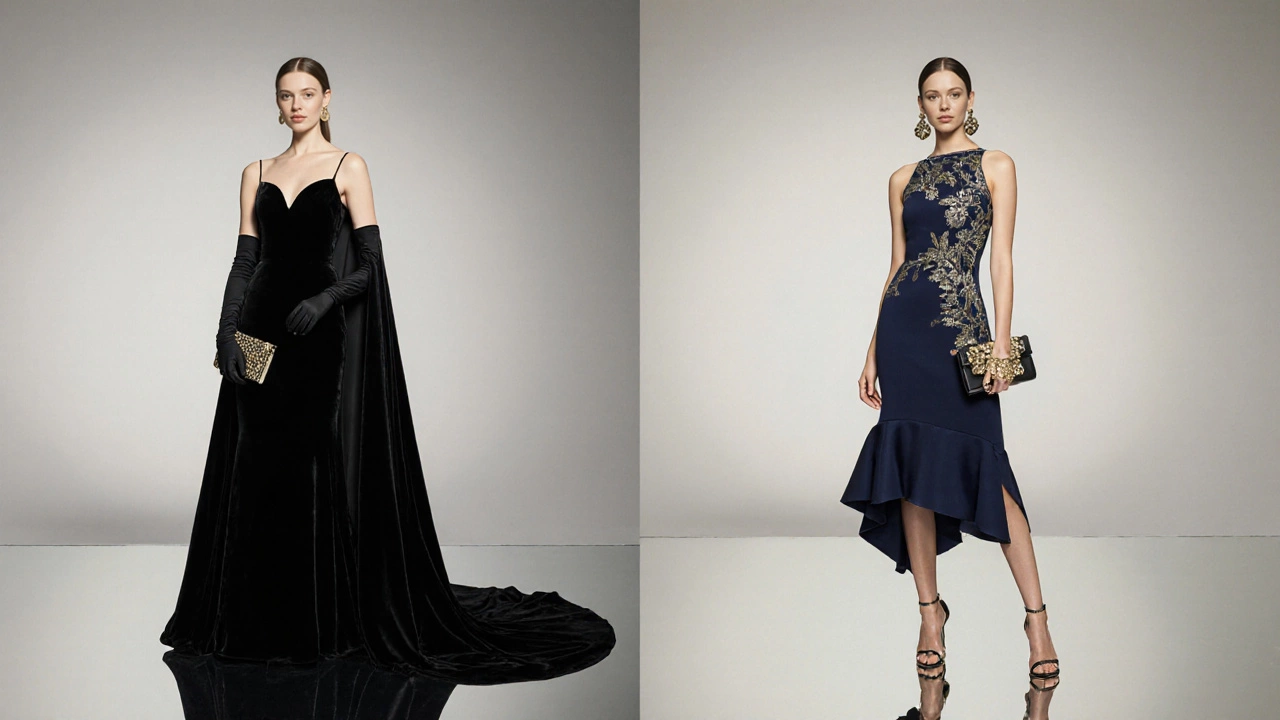
How to Buy the Right One
Shopping for either dress? Here’s what to look for:For evening dresses: Focus on fit and fabric. Look for structured bodices, lining that doesn’t cling, and hemlines that graze the floor without dragging. Try it on with the exact heels you plan to wear. If you can’t walk comfortably in it, it’s not the right dress.
For cocktail dresses: Focus on versatility. Can you wear this to three different events? Does it look good with different accessories? Can you wear it again next season? A good cocktail dress lasts years. Look for timeless cuts-A-line, sheath, wrap-and avoid trends that will look dated in six months.
Try on both types in person if you can. Online shopping works, but fabric behaves differently on screen. A silk evening dress might look like polyester in a photo. A sequined cocktail dress might look cheap if the backing isn’t lined.
What to Pair With Each
Accessories complete the look:- Evening dress: Long gloves, diamond or pearl earrings, a clutch, and heels with a thin stiletto. Hair up, makeup polished.
- Cocktail dress: Statement earrings, a bold lip, a small crossbody or clutch, and heels with a block or kitten heel. Hair down or in a low bun. A structured blazer or shawl can elevate it for colder nights.
Never wear a cocktail dress with a long train or a floor-length gown with chunky sneakers. The mismatch screams "I didn’t read the invite."
It’s Not About the Dress-It’s About the Moment
At the end of the day, the difference isn’t just fabric or length. It’s about respect. An evening dress says, "This event matters to me." A cocktail dress says, "I’m here to enjoy myself, and I’ve dressed to match the vibe."Neither is better. But wearing the wrong one can make you feel out of place-or worse, like you’re trying too hard. The goal isn’t to outshine everyone. It’s to fit in, comfortably, elegantly, and with confidence.
Next time you’re invited to something fancy, check the time, the venue, and the wording. Then pick the dress that matches the energy-not the Instagram post.
Can I wear a cocktail dress to a black-tie event?
Technically, no. Black-tie events expect evening dresses-floor-length, formal fabrics, and elegant detailing. While some modern events are more relaxed, wearing a cocktail dress to a true black-tie affair can come off as underdressed. If you’re unsure, it’s safer to choose an evening dress or ask the host directly.
Is a midi dress considered a cocktail dress?
Yes, a midi dress-ending between the knee and calf-is a classic cocktail dress silhouette. Many modern cocktail dresses are midi-length because they offer elegance without the formality of floor-length gowns. As long as the fabric and design are dressy (not casual), it’s perfectly appropriate for cocktail events.
Can I wear a jumpsuit instead of a dress?
Absolutely, if it’s designed for formal wear. A tailored, luxurious jumpsuit in silk, satin, or velvet with elegant details can replace either an evening or cocktail dress, depending on its length and formality. Floor-length jumpsuits work for evening events; knee- or midi-length ones are great for cocktail occasions. Just avoid casual fabrics like denim or cotton.
What’s the most common mistake people make with evening dresses?
Wearing something too short or too flashy. Evening dresses are meant to be sophisticated, not loud. Many people think more sparkle equals more formal, but that’s not true. A simple, well-tailored gown in black, navy, or deep red often looks more elegant than a heavily sequined dress. Also, forgetting to wear the right undergarments-like a strapless bra or seamless shapewear-can ruin the look.
Do I need to buy a new dress for every formal event?
No. A well-chosen evening dress can be worn to multiple events with different accessories. Swap out jewelry, shoes, or add a wrap or jacket to refresh the look. A classic black cocktail dress is even more versatile-it can work for weddings, dinners, and parties all year. Focus on quality over quantity. One great dress you love is better than five you only wear once.
